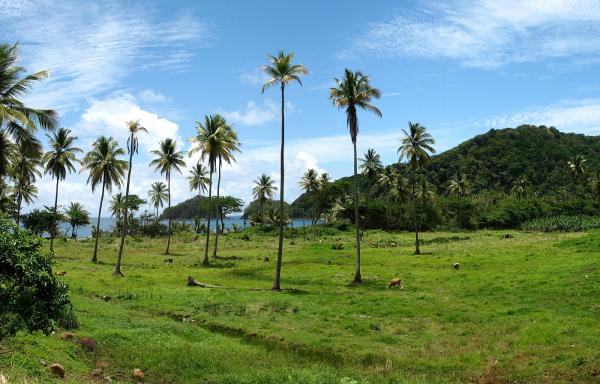Solutions That Serve People and the Environment

Jamaica is a land rich in food and cultural traditions, legendary rivers and fiercely independent rural communities.
As we consider schemes to alleviate poverty here, my hope is that we will remain conscious of the communities and ecosystems upon which all life and ultimately all wealth depend. The deprivation that manifests as poverty in Jamaica's human communities is being expressed as well in the depletion of her natural resources and the degradation of her environment.
The Center for Ecoliteracy in Berkeley, California, which I cofounded with systems theorist and author Fritjof Capra and philanthropist and former businessman Peter Buckley, is a foundation engaged in fostering an understanding of how nature sustains life. The Center is dedicated to mirroring ecological wisdom in how we educate young people, conduct businesses, and design technologies.
We are seeking solutions that simultaneously address the needs of human communities and the ecosystems in which they are embedded, and we have adopted the framework of "solving for pattern" as a way to test the validity of our grant-making and programmatic strategies. In an essay entitled "Solving for Pattern" in his book, Gift of Good Land, poet, novelist, philosopher, and farmer Wendell Berry articulates three approaches to problem solving.
The first approach, he says, is one that immediately worsens the problem. (One example of this would be serving free sweetened drinks and sweet buns at school lunch to school-age children who are showing evidence of diet-related disease.)
The second approach causes a ramifying series of new problems. Catching freshwater shrimp in the legendary Rio Grande by poisoning the water, as some are doing now, is an example of solving a problem without an awareness of downstream consequences. It is a lethal short-term fix that robs all future generations of their health and well-being.
Perhaps, says Berry, it is not until "health is set down as the aim that we come in sight of the third kind of solution: that which causes a ramifying set of solutions." In other words, only health appears to be enough of a qualitative, holistic, and systemic measure to assess whether the whole is indeed greater than the sum of the parts. Health, we discover, is a systemic indicator of the resilience and viability of a system.
Case in point
As an example of solving for pattern, I'd like to share with you, Rethinking School Lunch, a program of the Center for Ecoliteracy. Why, you might ask, would a foundation dedicated to education for sustainable living focus its attention and resources on changing the food environment in schools and making learning connections linking food, culture, health, and the environment?
In the United States, the National School Lunch Program is targeted to serve the nation's most vulnerable children. Nearly nine billion federal dollars are invested annually in school lunch; yet the epidemic in diet-related disease in the school-age population is powerful feedback that something fundamental simply isn't working.
This multi-billion dollar investment by taxpayers in a high-fat, high-sugar, high salt diet manufactured and shipped by global food producers is resulting in a multi-billion dollar public health crisis, "the likes of which have not been seen before," according to the Centers for Disease Control in Atlanta. At the same time, school lunch is generating an equally appalling solid waste problem.
But the Center for Ecoliteracy and other foundations committed to sustainable agriculture and food systems education recognize the validity of another path. Our Rethinking School Lunch strategy in which the health of children, communities, and ecosystems is taken as the aim is an example of solving for pattern that sets into motion a series of cascading solutions.
For example, when even a sliver of the multi-billion dollar revenue stream allocated to school lunch is invested in healthy food grown and procured from local sources, the result is an economic generator for rural communities.
When universal breakfast is served to all the students in a school, according to a recent study conducted by Dr. J. Michael Murphy of Harvard Medical School and Massachusetts General Hospital, academic achievement and health measures increase significantly; and an array of psycho-social behavioral indicators, including school attendance and cooperation, increase while violence, absenteeism, and graffiti drop dramatically.
When instructional school gardens and healthy food are made available, children demonstrate remarkably improved health and capacity for learning. And a hands-on, experiential curriculum linking food, culture, health, and the environment provides a lively, delicious, and relevant education.
When children and youth are meaningfully engaged in hands-on food systems education, such as youth farms, they are far more likely to succeed in school and in life, and far less likely to be oblivious to the consequences of poisoning rivers for short-term gain.
Positive Signs in Jamaica
In our visits to poverty-alleviating projects in Kingston, I was privileged to see inspiring examples of people reweaving lost connections of communities to place, and food to culture and the environment. In Trench Town, which I previously knew only as a mythical place in the music of Bob Marley, or as a troubled place in newspaper headlines, we sampled warm, fragrant gingerbread fresh from an oven in a bakery that provides revenue, training, and nutrition to an impoverished neighborhood at the Laws Street Training Center.
Outside the Amsterdam Theatre, a building recently reclaimed by the Agency for Inner City Renewal to provide a school where training projects are gaining traction, I witnessed a huge rosette of vibrant greens being harvested from a bed eked out of a bare scrabbled hillside, and then, handed joyfully to someone on her way to a cooking pot.
As we continue on the path of designing financing and development strategies in Jamaica, I trust that we will stay ever mindful of the vibrant, life-affirming cultural, agricultural, and ecological traditions of this country, and reinvest in those traditions in ways that create cascading solutions, extending out into an ever more promising future.



